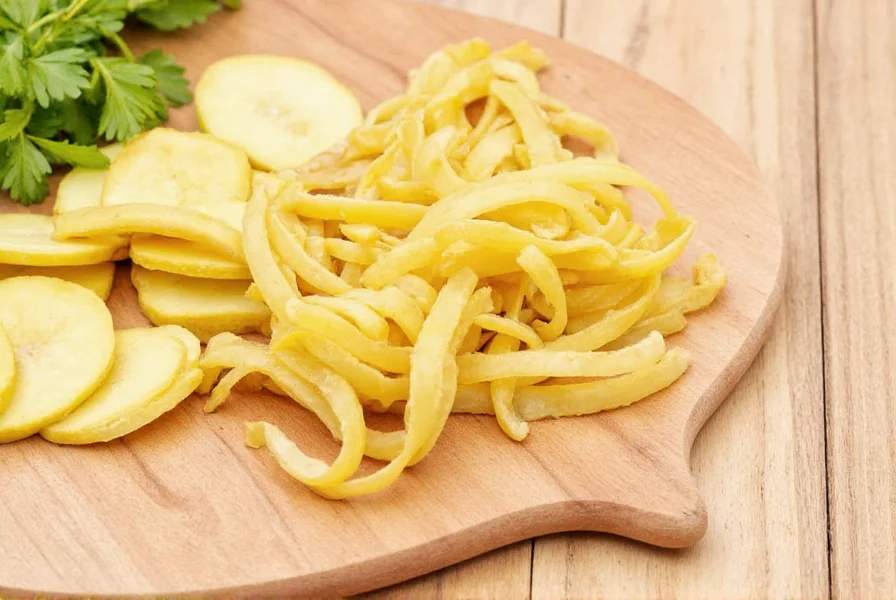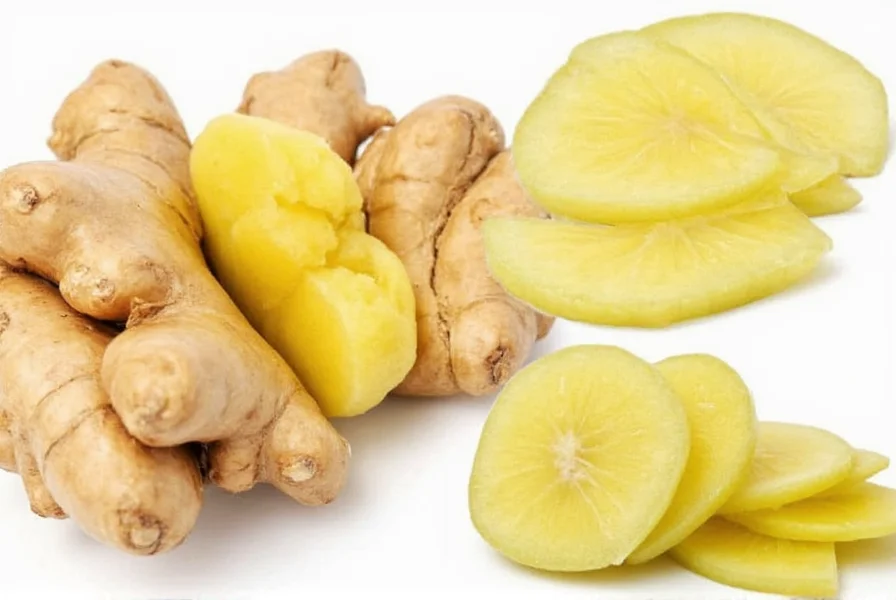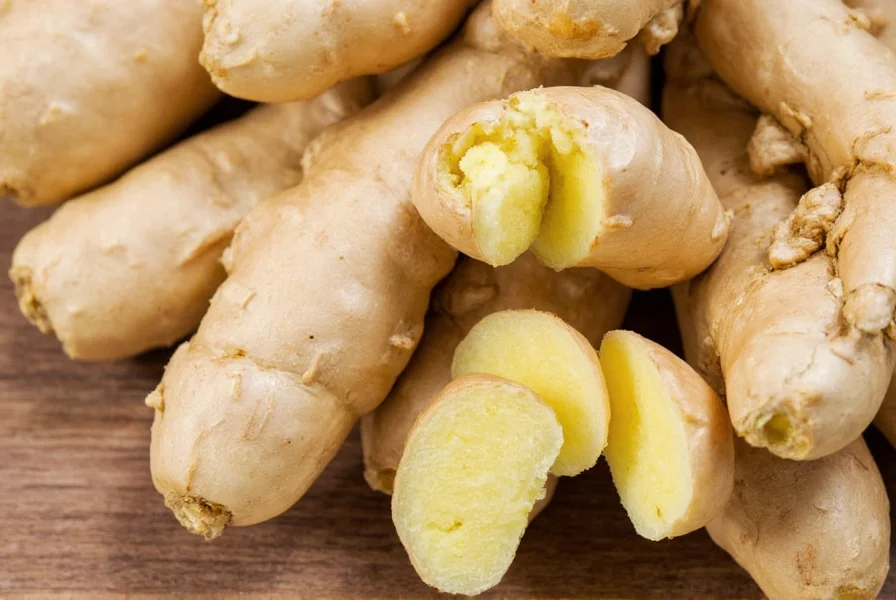Running out of fresh ginger mid-recipe doesn't have to ruin your cooking. Whether you're preparing an Asian stir-fry, baking gingerbread, or making homemade curry, knowing reliable ginger alternatives keeps your culinary projects on track. This guide provides tested substitution ratios and practical advice for replacing fresh ginger in any dish.
Why You Might Need a Fresh Ginger Substitute
Home cooks frequently face situations requiring ginger alternatives. You might be midway through a recipe when you realize your fresh ginger has gone bad, or perhaps you're cooking in a location without access to quality produce. Dietary restrictions, flavor preferences, or simply wanting to experiment with different taste profiles can also prompt the search for how to substitute fresh ginger in recipes. Understanding proper conversion ratios prevents recipe failures and maintains dish integrity.
Top Ginger Substitutes with Conversion Ratios
Not all ginger alternatives work equally well in every application. The right choice depends on your specific recipe and desired flavor profile. Here's a detailed comparison of the most reliable options:
| Substitute | Conversion Ratio | Best For | Limitations |
|---|---|---|---|
| Ground ginger | 1/4 tsp = 1 tbsp fresh | Baking, spice blends | Less complex flavor, no fibrous texture |
| Ginger paste | 1:1 ratio | Curries, marinades | May contain additives, stronger flavor |
| Crystallized ginger | 1 tbsp minced = 1 tbsp fresh | Baking, teas | Sweetened, alters dish sweetness |
| Galangal | 1:1 ratio | Thai soups, curries | Sharper, more citrusy flavor profile |
| Allspice | 1/8 tsp = 1 tbsp fresh | Baking, spice cakes | Lacks ginger's brightness, more complex spice |
Detailed Analysis of Each Ginger Alternative
Ground Ginger: The Pantry Staple Substitute
When considering ground ginger vs fresh ginger conversion, remember dried spices concentrate flavor during processing. The standard ginger powder equivalent to fresh ginger is 1/4 teaspoon dried for every tablespoon of fresh ginger. This works best in baked goods where texture matters less than flavor. For marinades or sauces, mix ground ginger with a small amount of water to create a paste that better mimics fresh ginger's consistency.
Ginger Paste: The Convenient Alternative
Many grocery stores now carry refrigerated ginger paste in tubes. This provides the closest flavor match with a straightforward 1:1 substitution ratio. When using ginger paste as your best ginger substitute for stir fry, note that commercial varieties often contain citric acid or other preservatives that can slightly alter flavor. For maximum freshness, make your own paste by blending peeled ginger with a small amount of water and freezing in ice cube trays.

Specialty Substitutes for Specific Cuisines
Certain dishes require more nuanced alternatives. In Thai cuisine, galangal makes an excellent fresh ginger substitute in tom kha gai or other coconut-based soups, though its sharper, more floral notes differ from ginger's warmth. For Indian curries, consider combining a small amount of cardamom with ground coriander to approximate ginger's complexity. Bakers can use a blend of mace and allspice (1/8 teaspoon total per tablespoon of fresh ginger) when creating spice cakes or gingerbread where the distinctive fibrous texture isn't crucial.
When Substitution Requires Recipe Adjustment
Understanding fresh ginger substitute measurements goes beyond simple ratios. In savory dishes like stir-fries, fresh ginger's fibrous texture contributes to mouthfeel. When using powdered alternatives, compensate by adding finely minced shallots or scallion whites. For baking applications, remember that dried ginger lacks fresh ginger's natural moisture—reduce other liquids by 1-2 teaspoons per substitution. When making ginger tea, crystallized ginger provides both flavor and sweetness, eliminating the need for additional sweeteners.
Practical Tips for Successful Substitution
Professional chefs recommend these techniques when working with ginger alternatives for baking or cooking:
- Taste as you go: Dried spices intensify during cooking—add incrementally
- Consider timing: Add dried spices early in cooking; fresh alternatives near the end
- Balance flavors: When using stronger substitutes like galangal, reduce other assertive ingredients
- Texture matters: In dishes where ginger's fibrous quality is important, add shredded jicama for similar mouthfeel
Chefs specializing in Asian cuisine emphasize that the best ginger substitute for stir fry depends on the specific dish. For delicate seafood stir-fries, use half the normal amount of substitute to avoid overpowering flavors. In heartier beef or pork dishes, you can safely increase ginger alternatives by 25% to maintain flavor balance.

When Not to Substitute Fresh Ginger
Some applications truly require fresh ginger's unique properties. Traditional Japanese gari (pickled ginger) needs fresh rhizome for proper texture and enzymatic reactions. Fresh ginger is irreplaceable in dishes where its fibrous strands contribute to mouthfeel, such as certain Korean banchan or Indian chutneys. For medicinal applications like ginger shots, fresh ginger provides enzymes and compounds that degrade during processing—substitutes won't deliver the same health benefits.
Storing Ginger Substitutes for Maximum Freshness
Proper storage extends the usability of your ginger alternatives. Keep ground ginger in an airtight container away from light and heat—it maintains potency for 6-12 months. Ginger paste stays fresh for 3 weeks refrigerated or 6 months frozen. Crystallized ginger should be stored in a cool, dry place with minimal air exposure. For frequent users, portioning substitutes into recipe-sized amounts before freezing prevents waste and ensures you always have the right quantity available.
Final Recommendations
The ideal ginger substitute depends on your specific culinary application. For most baking needs, ground ginger with proper dried ginger to fresh ginger ratio adjustments works perfectly. Savory dishes benefit from ginger paste or galangal, while crystallized ginger shines in beverages and desserts. Always consider both flavor and texture requirements when selecting your substitute, and don't hesitate to combine alternatives for complex flavor profiles. With these guidelines, you'll never have to abandon a recipe due to missing fresh ginger.
Frequently Asked Questions
Can I use ground ginger instead of fresh in curry?
Yes, but use 1/4 teaspoon ground ginger for every tablespoon of fresh ginger called for. Add it early in the cooking process to allow flavors to develop fully. For best results, bloom the ground ginger in hot oil with other spices before adding liquids. This technique maximizes flavor extraction and prevents a dusty texture in your curry.
What's the best substitute for fresh ginger in gingerbread?
Ground ginger combined with a pinch of mace makes the best substitute for fresh ginger in gingerbread. Use 3/4 teaspoon ground ginger plus 1/8 teaspoon mace for every tablespoon of fresh ginger. This combination replicates ginger's warm, slightly peppery notes while adding the complexity that fresh ginger provides in baked goods.
How do I substitute ginger in sushi ginger (gari)?
Fresh ginger is essential for authentic sushi ginger as its fibrous structure holds the pickling solution. No suitable substitute exists for this specific application. However, you can make acceptable quick-pickled ginger using young, tender fresh ginger which requires less processing. The enzymatic reactions that create gari's distinctive pink color and texture only occur with fresh ginger root.
Can I use lemon juice as a ginger substitute?
Lemon juice alone cannot substitute for ginger's unique flavor profile, but it can complement ginger alternatives in certain dishes. For light Asian dishes, combine 1 teaspoon lemon juice with 1/4 teaspoon ground ginger to approximate fresh ginger's bright, spicy notes. This works well in salad dressings or delicate seafood preparations where full ginger flavor might overpower.
Does ginger powder lose potency over time?
Yes, ground ginger gradually loses volatile compounds that provide its characteristic flavor. Properly stored in an airtight container away from light and heat, it maintains good flavor for 6-12 months. Test potency by rubbing a small amount between your fingers—if you can't smell a strong, spicy aroma, it's time to replace it. For critical recipes, always use freshly ground ginger from whole dried rhizomes when possible.











 浙公网安备
33010002000092号
浙公网安备
33010002000092号 浙B2-20120091-4
浙B2-20120091-4